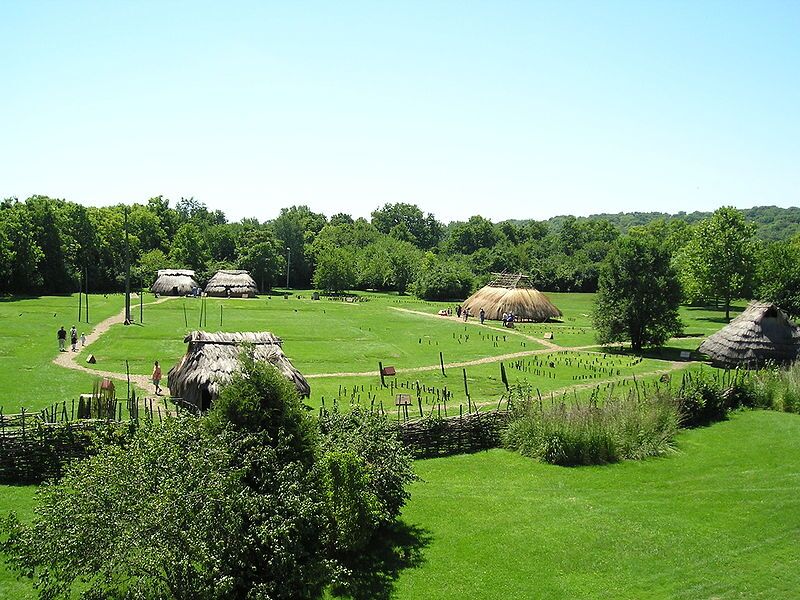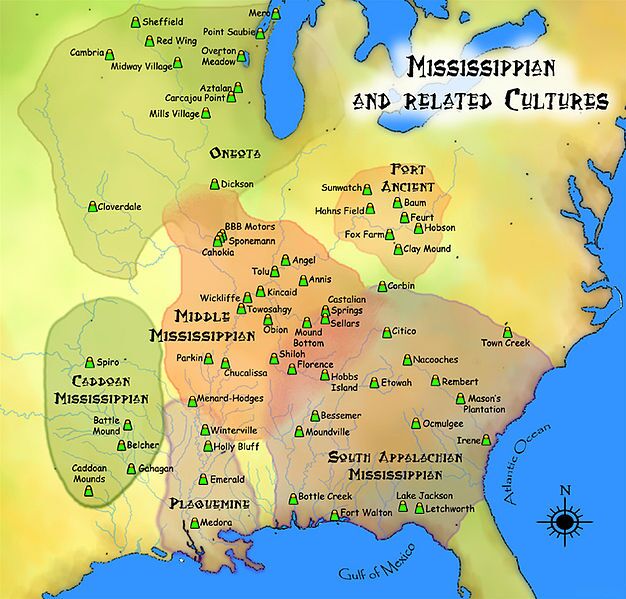
Researchers are saying that the mound-building Fort Ancient culture of eastern North America experienced a rapid increase in maize production, then went through a slow decline over the ensuing years.
Based on a recent δ13C and 87Sr/86Sr isotope analysis study of human tooth enamel sampled from burials at sites associated with the 1000 – 1750 CE Native American Fort Ancient culture, Robert A. Cook of the Ohio State University and T. Douglas Price of the University of Wisconsin-Madison have concluded that this particular culture experienced a relatively rapid rise of maize production in the beginning and then went through a gradual decline over the following years.
“Our results suggest that Fort Ancient societies adopted maize agriculture quickly with the initial sites consuming high levels of maize,” write Cook and Price in their study abstract. “The intensity of maize consumption may have declined over time, however, in contrast to the current model.”*
_______________________________________
 Fort Ancient site of Sun Watch Village, an example of a reconstructed village site. Wikimedia Commons
Fort Ancient site of Sun Watch Village, an example of a reconstructed village site. Wikimedia Commons
_________________________________________
 Map showing the geographic spread of the Fort Ancient culture. Heironymous Rowe, Wikimedia Commons
Map showing the geographic spread of the Fort Ancient culture. Heironymous Rowe, Wikimedia Commons
_________________________________________
Their study results also suggested that the Fort Ancient society benefitted from the influx of populations from neighboring Mississipian culture centers or settlements, suggesting the spread of Mississippian agricultural and cultural traditions eastward.
“There is clear evidence for the presence of non-local individuals at early Fort Ancient sites, particularly Turpin, with the majority being attributable to neighboring Mississippian regions,” they added. “These developments occurred at the largest sites located by the mouths of the Great and Little Miami Rivers where the most abundant Mississippian house styles and objects are concentrated.”*
The Mississippian culture was a Native American culture that flourished in what is now the Midwestern, Eastern, and Southeastern United States from approximately 800 to 1600 CE. They are perhaps best known for their construction of large, earthwork pyramid mounds, or platform mounds, and the practice of large-scale, intensive Maize-based agriculture, which enabled their settlements to support large populations and craft specialization.
Fort Ancient was a Native American culture that flourished from 1000-1750 CE along the Ohio River in what is today southern Ohio, northern Kentucky, southeastern Indiana and the western part of West Virginia. Also a maize-based agricultural society that built ceremonial platform mounds, the Fort Ancients were thought to have been a part of the Mississippian culture. However, many scholars have now suggested that they were an independently developed culture descended from the Hopewell culture (100 BCE–500 CE).
_______________________________________
 Map showing the geographic spread of the Mississippian and related cultures. Heironymous Rowe, Wikimedia Commons
Map showing the geographic spread of the Mississippian and related cultures. Heironymous Rowe, Wikimedia Commons
_______________________________________
The study is been published in the Journal of Archaeological Science.
____________________________________________________
*Cook, Robert A. and Price, T. Douglas, Maize, Mounds and the Movement of People: Isotope Analysis of a Mississippian/Fort Ancient Case, Journal of Archaeological Science, doi:10.1016/j.jas.2015.03.022
____________________________________________________
 You can read our more in-depth articles about new discoveries and developments in archaeology and anthropology with a premium subscription to Popular Archaeology Magazine. Find out what Popular Archaeology Magazine is all about.
You can read our more in-depth articles about new discoveries and developments in archaeology and anthropology with a premium subscription to Popular Archaeology Magazine. Find out what Popular Archaeology Magazine is all about.
In addition, the latest Popular Archaeology ebook is now available.
______________________________________________
Travel and learn with Far Horizons.
____________________________________________
 Popular Archaeology’s annual Discovery Edition eBook is a selection of the best stories published in Popular Archaeology Magazine in past issues, with an emphasis on some of the most significant, groundbreaking, or fascinating discoveries in the fields of archaeology and paleoanthropology and related fields. At least some of the articles have been updated or revised specifically for the Discovery edition. We can confidently say that there is no other single issue of an archaeology-related magazine, paper print or online, that contains as much major feature article content as this one. The latest issue, volume 2, has just been released. Go to the Discovery edition page for more information.
Popular Archaeology’s annual Discovery Edition eBook is a selection of the best stories published in Popular Archaeology Magazine in past issues, with an emphasis on some of the most significant, groundbreaking, or fascinating discoveries in the fields of archaeology and paleoanthropology and related fields. At least some of the articles have been updated or revised specifically for the Discovery edition. We can confidently say that there is no other single issue of an archaeology-related magazine, paper print or online, that contains as much major feature article content as this one. The latest issue, volume 2, has just been released. Go to the Discovery edition page for more information.






